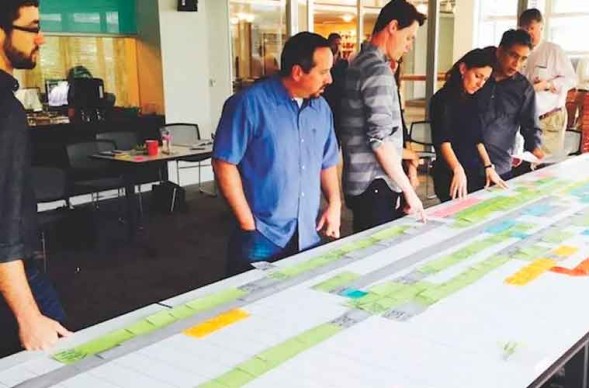Zigurat Global Institute of Technology
Blog / BIM & Construction Management
Why traditional Project Management fails: keys to success
Categories

Traditional project management in the architecture, engineering and construction industry (aec) has proven to be inefficient. other industries, such as the automobile, adopted the new production and management philosophies in the late 80's, and were followed by manufacturers from the rest of industries, including sectors such as technology and services.
However, the AEC industry has remained anchored for decades in the same management systems. Different studies published during the last 2 decades place the AEC industry at the bottom of the rankings in terms of productivity, efficiency, quality, safety or use of new technologies.
Typical causes why projects fail
- Incomplete, scarcely analyzed and insufficiently detailed designs.
- Lack of performance measurement systems, not only those related to time, costs, productivity and quality, but also those focused on customer satisfaction.
- Lack of coordination between the different actors.
- Use of obsolete methods in the planning, control and management of production, which cause systematic non-compliance with deadlines.
- Contracts based on confrontation, mutual mistrust and lack of transparency between the parties involved in the entire process, pushing risk down the supply chain.
- Fragmented work teams in the design, manufacturing and construction phases, strongly hierarchical, which generates conflicts of interest between the parties involved, undermining teamwork and cooperation.
- The participation of the different actors in the design and construction process happens at different times without spaces for collaboration. This organization hinders communication and lengthens the problem detection process.
- Unilateral effort is encouraged and the success of the project is diluted between the personal interests of each party.
- Work is done in isolated silos, which causes problems due to lack of effective communication between members of the design-manufacture-construction team.
- There is no systematic learning and learning curves are very long. Ideas and improvements are lost from one project to the next or are retained at very low percentages.
Success factors
Lean Construction Management provides a different and innovative approach that tries to maximize the delivery of value and efficiency in all phases of the project. The success factors can be grouped into 4 large areas:
1. Contractual model
Contracting models are based on collaboration and trust. Cost, planning and delivery of customer value objectives are used as primary design criteria from the beginning, using constant feedback between design decisions and cost results rather than waiting until the end of the design phase to make a cost estimate. Design is not carried out in silos, but all stakeholders involved in the processes of design, manufacturing, construction, use, and maintenance will take part in the decision-making and follow the same guidelines
2. Project Management System
It is required a management based on strong leadership and not traditional command and control approach. Use of collaborative planning techniques. Design, manufacturing and construction are planned as a process. The management system requires an integrated team structure.
3. Social Strategies
The new system requires early involvement of key stakeholders. Collaborative and consensual decision making. Communication and structural barriers are eliminated. The information is shared on common servers. Learning to work with incomplete information.
4. Innovation, learning and use of appropiate technologies
Appropriate use of new technologies, at the service of people and that simplify processes. Innovation and continuous improvement are encouraged. For this purpose, tools such as Last Planner System are used, which involve the entire team and help reduce learning curves. The standardization of processes and the measurement and analysis of key performance indicators are encouraged.
Use of technologies and methodologies such as BIM, Common Data Environments, online applications for communication and teamwork, or Intelligent Data Management, among others The AEC industry faces great challenges and changes that will happen at an increasingly fast pace, and those companies that do not adapt to these changes will be left out of the competition, at least for a high percentage of projects that increasingly demand the use of new technologies and new management systems. Author of the article: Juan Felipe Pons Achell, Director of the Máster Internacional en Construction Project Management (spanish edition).




